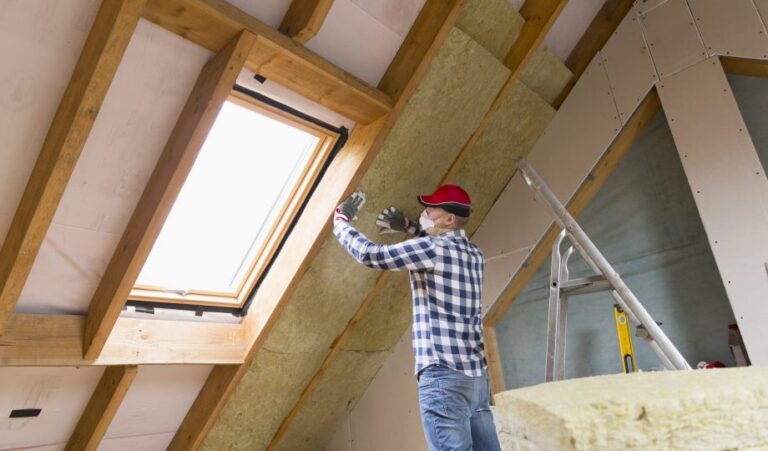Home truths: Green building expectations are changing, and businesses are responding

This month saw the release of the NextGeneration results, which is the sustainability benchmarking of the top housebuilders by volume in the UK – now in its 15th year. No change in the top three, with Lendlease, Barratt Developments and Redrow scoring highly, and an honourable mention for Telford Homes in fourth who have shot up the rankings recently. All UKGBC members, as it happens.
Speaking at the launch event gave me the chance to consider some of the key sustainability trends impacting housebuilders at the moment, which give rise to both challenges and opportunities. On reflection, these are all themes which cut across different economic sectors.
Carbon is back
Firstly, there is a very clear sense that carbon is back on the agenda. Thank goodness, after a few years in the wilderness with the demise of the Code for Sustainable Homes and the scrapping of the Zero Carbon Homes policy. There is a welcome re-emergence of interest from government in the role of new homes in helping to meet the carbon budgets, but the real test is how far Building Regulations will be strengthened next year.
As is so often the case, it is cities and progressive businesses that are leading the charge. The same week that Manchester adopted a policy to be carbon neutral as a city by 2038, Bristol adopted a policy to be carbon neutral by 2030 – going beyond even London where we’ve seen ambitious targets for some time. These targets are not going to be achieved without net zero carbon new build policy, which is well understood by the authorities in question. Look out for the Greater Manchester Spatial Framework in the new year as a sign of things to come from leading UK cities.
Smart businesses are already ahead of the game. Some, like Lendlease, simply do not build below a standard (equivalent to the old Code 4) which is in excess of that required by most local authorities. Meanwhile, Berkeley Group have become the first major housebuilder globally to commit to building all homes at net zero carbon in operation from 2030. The groundswell of support for UKGBC’s new task group, which will work towards an industry-led definition of net zero carbon, is a sign that this issue is not going away – and there is the collective will in the industry to move forward, with or without central Government.
The rise of Social Value
This topic is generating huge interest right now. Social Value in the development process is the benefit felt by people – residents, local businesses, wider communities and cities – from any type of intervention or action at any point in the building lifecycle. It could be the benefits of a high-quality natural environment and amenity space in terms of health & wellbeing, or resilient green infrastructure that is adaptable to future flood risk, or lower energy bills from better thermal performance of homes.
National Government is now examining how to strengthen and expand the Social Value Act – and is particularly keen to integrate it better into the planning system. Again, cities are stepping up. Planning is one of the ways, alongside procurement and land disposal policy, in which local authorities can drive higher quality, sustainable development locally – by mandating quantification of social value outcomes.
Here again, leading businesses are on the front foot. Redrow has developed a Social Value calculator, to act as a forecasting tool that can help make the business case for design decisions that will deliver better outcomes for residents. While Igloo Regeneration champion the role of community-led design processes in achieving maximum social value outcomes.
Performance, transparency and reputation
Thirdly and finally, something that cuts across everything else. New homes should perform as intended to, yet in reality we know this is not the case at present. Although the issue is often highlighted by disparities in energy and carbon performance, this is a crosscutting problem which equally applies to other sustainability issues – not least those relating to occupant health and wellbeing, such as overheating and indoor air quality.
I think we will see local government play a growing role in incentivising industry to overcome this problem. One of the most far reaching policies I’ve seen is in Milton Keynes’ forthcoming local plan. Developments will have to “Put in place a recognised monitoring regime to allow the assessment of energy use, indoor air quality, and overheating risk for 10 per cent of… dwellings for the first five years of their occupancy, and ensure that the information recovered is provided to the applicable occupiers and the planning authority.”
What I find particularly interesting here is the potential for real performance data to be in the public domain and act as a reputational driver. I realise this is fraught with legal issues, but I would suggest that in the future, real performance data – on a raft of quality issues – is likely to be a far greater driver of quality and assuring sustainability outcomes than regulation.
On this topic I don’t see the same leadership from industry. So here is an opportunity. Surveys regularly show the importance consumers attach to transparency, which has been shown to massively increase trust and brand loyalty. This is part of a growing trend for consumers to demand purpose-led business. Eighty-six per cent of millennials think that business success should be measured in terms beyond just financial performance.
This is one of those areas in which there will be rewards for those who move first, and dangers for those who wait. I think that’s probably a sentiment that applies to any business in any sector, grappling with the fast-moving demands of sustainability.
This content originally appeared on Business Green
Related
Reimagining our Homes and Communities

Regenerative Places: Empowering communities to improve homes and neighbourhoods for the benefit of people and planet.

The 5 policies UKGBC wants to see in the King’s Speech

Why is social value so crucial when developing and managing commercial real estate?

